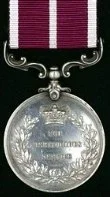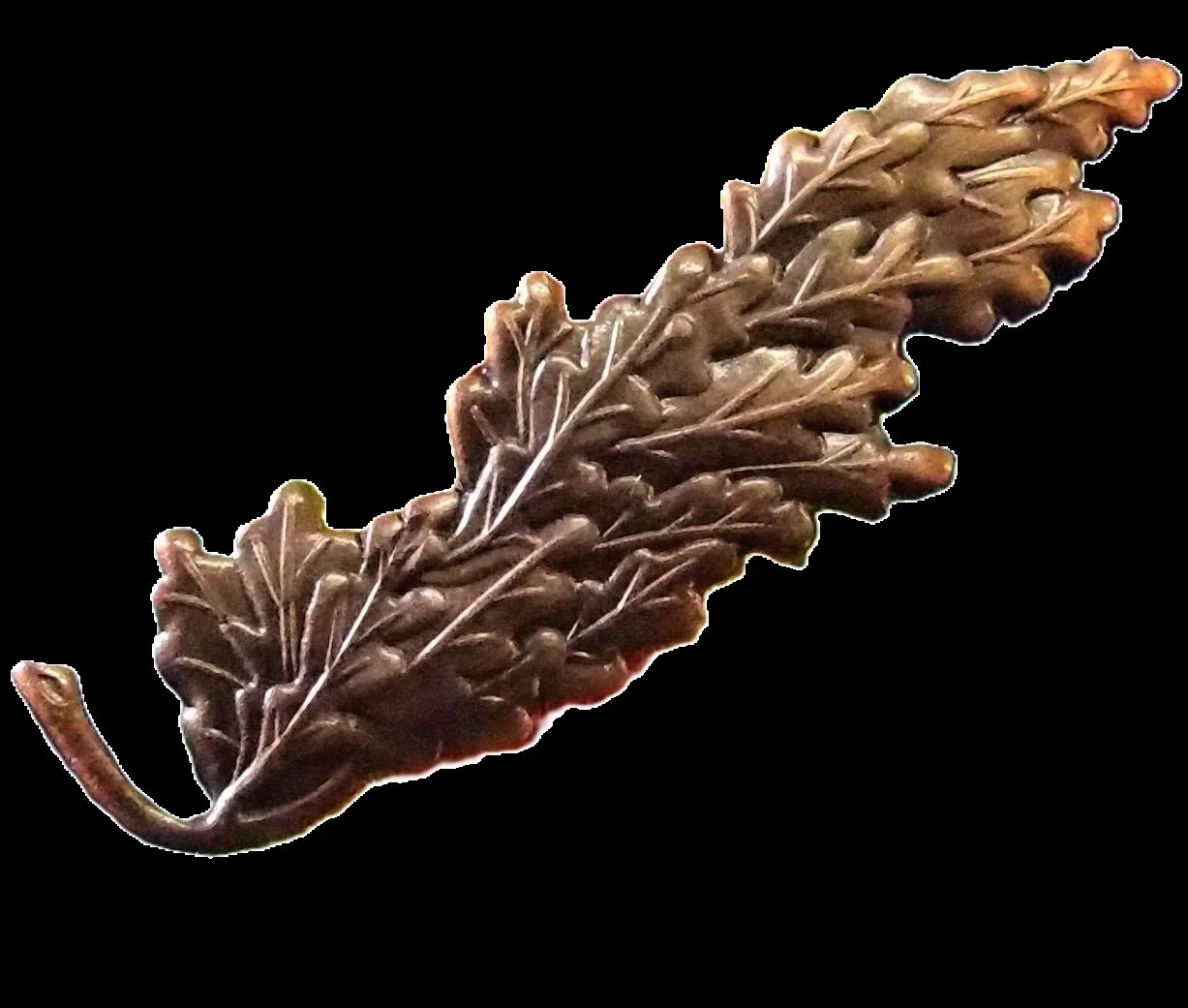Military - Commonwealth
Distinguished Service Order
Distinguished Conduct Medal
Military Cross
Military Medal
Meritorious Service Medal
Mentioned in Despatches
Bar to Medal
Sources
Some award dates are unclear
Military - Non-Commonwealth
Non-Military
Distinguished Service Order
The Distinguished Service Order is a military award of the United Kingdom, as well as formerly throughout the Commonwealth, awarded for operational gallantry for highly successful command and leadership during active operations, typically in actual combat.
Instituted on 6 September 1886 by Queen Victoria by Royal Warrant published in The London Gazette on 9 November, the first DSOs awarded were dated 25 November 1886.
7 March 1917
Undated
Matson, Thomas Rhodes (Dr) (Mentioned in Despatches)
William Shakespeare Perry
Distinguished Conduct Medal
The Distinguished Conduct Medal was a decoration established in 1854 by Queen Victoria for gallantry in the field by other ranks of the British Army. It is the oldest British award for gallantry and was a second level military decoration, ranking below the Victoria Cross, until it was discontinued in 1993 when it was replaced by the Conspicuous Gallantry Cross. The medal was also awarded to non-commissioned military personnel of other Commonwealth Dominions and Colonies.
10 August 1915
6 April 1916
10 August 1916
1 December 1917
Leonard Farlow
✞ Robert George Stone (Military Medal / Croix de Geurre)
Frederick Cecil James
William Henry Daniel Sully (Military Medal)
Military Cross
The Military Cross is the third level (second level until 1993) military decoration awarded to officers and (since 1993) other ranks of the British Armed Forces, and formerly awarded to officers of other Commonwealth countries.
The Military Cross is granted in recognition of "an act or acts of exemplary gallantry during active operations against the enemy on land" to all members of the British Armed Forces of any rank. In 1979, Queen Elizabeth II approved a proposal that a number of awards, including the Military Cross, could be recommended posthumously.
The award was created on 28 December 1914 for commissioned officers of the substantive rank of captain or below and for warrant officers. The first 98 awards were gazetted on 1 January 1915, to 71 officers, and 27 warrant officers.
24 March 1917
20 July 1917
12 August 1917
1 January 1918
4 March 1919
Victor Vincent Brown (Mentioned in Despatches)
25 July 1918
31 August 1918
10 December 1918
Alexander William Irvine (Bar)
Cyril George Clifford Thompson
Arthur Max Allen (Mentioned in Despatches)
Byron John Ross
✞ Abel Richmond Sheath
George Turner Wensor
Charles Edward Stanley
Military Medal
The Military Medal was a military decoration awarded to personnel of the British Army and other arms of the armed forces, and to personnel of other Commonwealth countries, below commissioned rank, for bravery in battle on land. The award was established in 1916, with retrospective application to 1914, and was awarded to other ranks for "acts of gallantry and devotion to duty under fire".
The award was discontinued in 1993, when it was replaced by the Military Cross, which was extended to all ranks, while other Commonwealth nations instituted their own award systems in the post war period.
23 September 1916
25 April 1918
17 June 1918
21 November 1918
12 February 1919
23 May 1919
15 September 1919
Undated
Undated
George Reginald Salisbury (Mentioned in Despatches)
6 August 1918
18 August 1918
21 September 1918
Clarence James Ackerman
Arthur Edgar Stone
Charles Henry Bailey
✞ Cyril Leggatt Sell (Bar)
Herbert Samuel Albon
Norman James Gunn
William Henry Daniel Sully (Distinguished Conduct Medal)
William Vane (Meritorious Service Medal)
Stanley Plimsoll Monk
William David Molloy
James Cameron
Meritorious Service Medal
The Meritorious Service Medal is a British medal awarded to Senior Non-Commissioned Officers and Warrant Officers of the British armed forces for long and meritorious service. From 1916 to 1928, eligibility was extended to cover both valuable services by selected other ranks irrespective of length of service, and for gallantry not in the face of the enemy.
Eligibility was widened in December 1977, with the medal now awarded on the same basis to all arms of the British armed forces.
The Meritorious Service Medal was instituted on 19 December 1845 for the British Army, to recognise long and meritorious service by warrant officers and non-commissioned officers of the rank of sergeant and above, with a small number of early awards bestowed for gallantry. Recipients were granted an annuity, the amount of which was based on rank.
3 June 1919
6 October 1919
27 October 1919
Undated
Undated
Undated
John Blair Mawhiney (Mentioned in Despatches)
Ronald George Dunn
George Elliott
Robert Osborne Wrightson Earle
George Elliott
William Vane (Military Medal)
Mentioned in Despatches
To be mentioned in dispatches (or despatches) describes a member of the armed forces whose name appears in an official report written by a superior officer and sent to the high command, in which their gallant or meritorious action in the face of the enemy is described.
In some countries, a service member's name must be mentioned in dispatches as a condition for receiving certain decorations.
Being mentioned in dispatches entitles a recipient to wear a small metallic device but does not include an entitlement to post-nominals.
20 May 1915
17 October 1915
1 October 1916
13 November 1916
26 January 1917
13 November 1916
1 June 1917
28 June 1917
21 August 1917
5 October 1917
7 November 1917
1 January 1918
7 April 1918
7 April 1918
31 December 1918
21 January 1919
12 December 1919
✞ Ernest Samuel Brown
✞ Robert George Stone (Distinguished Conduct Medal / Croix de Geurre)
George Reginald Salisbury (Military Medal)
✞ Frederick George Barnett
✞ Frederick George Barnett
✞ Hubert Sydney Centennial Simpson (two other undated awards)
Matson, Thomas Rhodes (Dr) (Distinguished Service Order)
Arthur Max Allen (Military Cross)
Victor Vincent Brown (Military Cross)
Wallis Mervyn Alfred Fletcher
Wallis Mervyn Alfred Fletcher
Gilbert James Brown
Cecil John Fletcher (O.B.E. Military Division / MiD 2 May 1942)
John Blair Mawhiney (Meritorious Service Medal)
Matson, Thomas Rhodes (Dr) (Distinguished Service Order)
Colin Beatty
Reginald James Wilson
Croix de Guerre
The Croix de Guerre (Cross of War) is a military decoration of France. It was created in 1915 and consists of a square-cross medal on two crossed swords, hanging from a ribbon with various degree pins. The decoration was first awarded during World War I, again in World War II, and in other conflicts; the croix de guerre des théâtres d'opérations extérieures ("cross of war for external theatres of operations") was established in 1921 for these. The Croix de Guerre was also commonly bestowed on foreign military forces allied to France.
12 January 1919
Undated
Donald Duncan Buchanan
✞ Robert George Stone (Distinguished Conduct Medal / MiD)
Bar to Decoration
A medal bar or medal clasp is a thin metal bar attached to the ribbon of a military decoration, civil decoration, or other medal. It most commonly indicates the campaign or operation the recipient received the award for, and multiple bars on the same medal are used to indicate that the recipient has met the criteria for receiving the medal in multiple theatres.
When used in conjunction with decorations for exceptional service, such as gallantry medals, the term "and bar" means that the award has been bestowed multiple times. For example, "DSO and two bars" means that the Distinguished Service Order was awarded on three occasions.
16 September 1918
3 June 1919
Alexander William Irvine (Bar to Military Cross)
✞ Cyril Leggatt Sell (Bar to Military Medal)
Most Excellent Order of the British Empire (Military Division)
The Most Excellent Order of the British Empire was formed in 1917 by King George V to reward service to the British Empire in the United Kingdom and abroad. Originally having only a Civil Division, a Military Division was added in 1918 to acknowledge distinguished military service of a non-combative nature.
This is awarded for having a major local role in any activity, including people whose work has made them known nationally in their chosen area.
3 June 1919
Cecil John Fletcher (Mentioned in Despatches / MiD 2 May 1942)
Sources
AIF Project https://www.aif.adfa.edu.au/index.html
Ancestry.com https://www.ancestry.com.au/
Australian Nurses in World War 1 http://ausww1nurses.weebly.com/co.html
Australian War Memorial https://www.awm.gov.au/
Australian War Memorial (Glossary) https://www.awm.gov.au/learn/glossary
Commonwealth War Graves Commission https://www.cwgc.org/
His Majesty’s Transport Ships https://alh-research.tripod.com/ships_lh.htm
Inner West 15000 https://www.leichhardt5000.com.au/
National Archives Australia https://www.naa.gov.au/explore-collection/defence-and-war-service-records
Department Veteran Affairs (Nominal Rolls) https://nominal-rolls.dva.gov.au/ww2
Prisoner of War Memorial Ballarat https://www.powmemorialballarat.com.au/
Trove https://trove.nla.gov.au/
Virtual War Memorial https://vwma.org.au/
St David’s Haberfield 150 Years (Vincent Crow © 2020)
Tours of Haberfield Past and Present Part One (Vincent Crow © 2002)
Tours of Haberfield Past and Present Part Two (Vincent Crow © 2007)
Tours of Haberfield Past and Present Part Three (Vincent Crow © 2010)
Preserving Their Names 1914-18 - Ashfield History No 22 (Ashfield & District Historical Society / Ann O’Connell © 2020)









